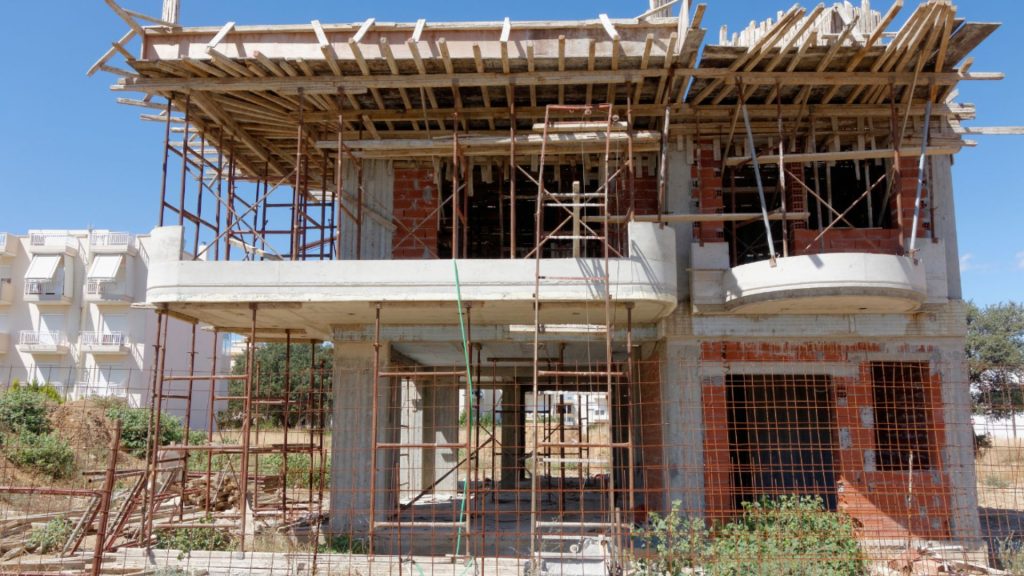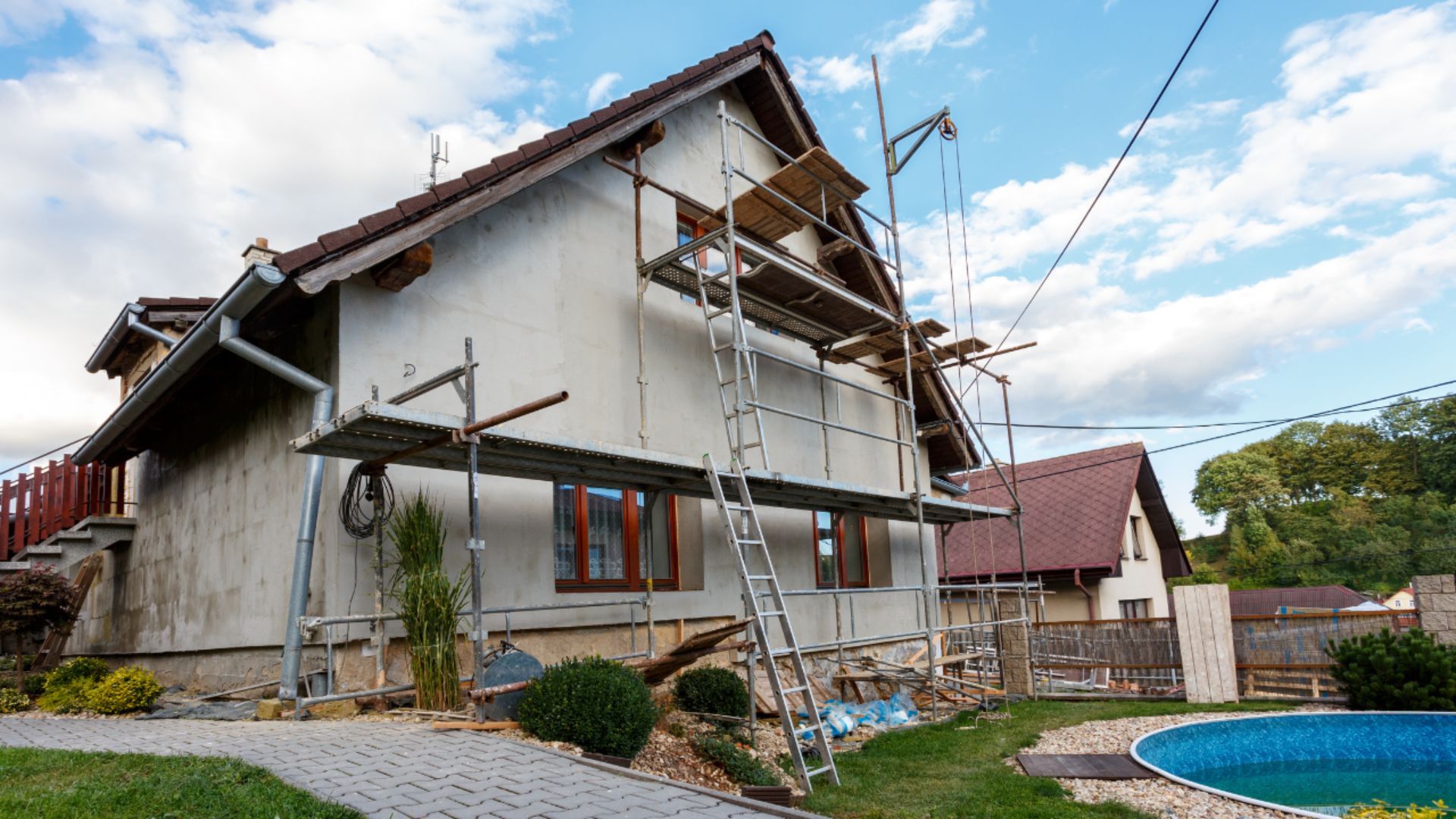When considering home renovations or remodelling projects, it’s essential to identify load-bearing walls accurately.
Load-bearing walls support the weight of the structure above them, ensuring structural integrity and safety.
Altering or removing a load-bearing wall without proper precautions can compromise the stability of a building.
This comprehensive guide will equip you with the knowledge and tools to determine if a wall is load-bearing, enabling you to plan your renovation projects more effectively and avoid potential structural issues.
What are Load-Bearing Walls?

Load-bearing walls play a crucial role in transferring the weight from the roof and upper floors down to the foundation of a building.
They are strategically positioned to distribute the loads evenly and maintain the structural integrity of the entire structure.
Identifying these walls correctly is vital to ensure that any modifications or removals are done safely.
Here are the 6 Tips to identify if a Wall Is Load Bearing
1. Start with the Building’s Blueprint and Structural Plans
The first step in determining if a wall is load-bearing is to examine the building’s blueprint or structural plans.
These documents, if available, provide valuable insights into the original design and load-bearing elements of the structure. Look for symbols or notations indicating load-bearing walls or consult with an architect or structural engineer to interpret the plans accurately.
2. Locate the Foundation
Load-bearing walls typically run perpendicular to the foundation of a building. Start by examining the basement or crawl space to identify the direction of the floor joists.
Walls that align with the direction of the floor joists are more likely to be non-load bearing, while walls that run parallel to the floor joists are likely to be load-bearing. Remember, this is a general guideline and may not hold true in all cases, especially in complex structural systems.
3. Consider Wall Placement
Load-bearing walls are often strategically positioned to support the weight from the floors or roof above. They are commonly found at the center of a building, as well as along exterior walls. Interior walls that are parallel to the roofline are also more likely to be load-bearing.
However, it’s important to note that architectural designs can vary, and professional evaluation is necessary to confirm load-bearing status definitively.
4. Assess Wall Thickness
Load-bearing walls are typically thicker than non-load-bearing walls due to the need to bear heavier loads. Measure the thickness of the wall by using a stud finder or carefully making a small opening.
If the wall is significantly thicker than other walls in the same structure, it could indicate its load-bearing nature. However, it’s important to note that wall thickness alone should not be the sole determining factor.
5. Examine the Structure Above
Observing the structure above the wall can provide valuable clues about its load-bearing status. If there are visible beams, trusses, or other structural members that rest directly on the wall, it is likely load-bearing.
Additionally, if the wall supports the load of a floor, roof, or any significant structural element, it is a strong indication of its load-bearing function. Carefully inspect the connections between the wall and the structure above to identify load transfer points.
6. Consult with a Professional
While the methods mentioned above can provide initial indications, it’s crucial to consult with a qualified professional, such as a structural engineer or architect, to confirm if a wall is load-bearing.
They have the expertise and experience to accurately assess the structural elements of a building, including load-bearing walls. Professionals can use advanced tools and techniques, such as structural analysis, to determine load-bearing status definitively.
What Is the Cost to Remove a Load-Bearing Wall?

Homeowners looking to open up their living space by removing a load-bearing wall need to take into account the costs associated with such a significant renovation. While the cost of removing one wall may seem relatively low, the expense can quickly add up when factoring in rerouting plumbing and electrical wiring.
Furthermore, second-story homes can be even more expensive to renovate, with costs ranging anywhere from $9,000-$15,000.
Ultimately, these costs include a variety of factors, such as material delivery, temporary support installation, drywall removal, new beam installation, and finishing touches.
Despite the cost, however, many homeowners find that the increased living space and improved functionality of their home are well worth the initial investment.
FAQ’s
What are 2 types of load-bearing walls?
The two types of load-bearing walls are exterior load-bearing walls, which provide support to the entire structure and carry the weight of the roof and floors, and interior load-bearing walls, which support the weight of specific areas or elements within a building.
What is the rule for load-bearing walls?
The rule for load-bearing walls is that they are typically positioned perpendicular to the floor joists and run parallel to the roofline. They are strategically located to distribute the weight from above to the foundation and are generally thicker than non-load-bearing walls.
How do you tell if it’s a load-bearing wall?
To determine if a wall is load-bearing, you can start by examining the building’s blueprint or structural plans to identify any indications of load-bearing elements.
Additionally, factors such as the wall’s placement, alignment with floor joists, thickness, and the presence of structural members resting on it can provide clues. However, it’s important to consult with a professional to confirm the load-bearing status definitively.
What are the types of load-bearing walls?
Load-bearing walls can be categorized into two main types: exterior load-bearing walls, which provide support to the entire structure and often have higher load-carrying requirements, and interior load-bearing walls, which support specific areas or elements within a building, such as interior floors or roof loads.
What is another name for a load-bearing wall?
Load-bearing walls are also commonly referred to as structural walls or supporting walls. These terms all describe walls that carry the weight of the structure and ensure its stability.
Which is the best load-bearing structure?
The best load-bearing structure depends on various factors such as the specific project requirements, architectural design, and the materials available. Common load-bearing structures include steel frames, reinforced concrete frames, and timber frames.
Each has its own advantages and considerations. Consulting with a structural engineer is crucial to determine the most suitable load-bearing structure for a particular project.
Conclusion
Identifying load-bearing walls is a crucial step in planning any renovation or remodelling project.
Understanding the key factors involved in determining load-bearing status can help you make informed decisions and ensure the structural integrity and safety of your home or building.
While the methods discussed in this guide provide valuable insights, it’s important to remember that professional evaluation is essential for accurate determination.
Engaging the expertise of a structural engineer or architect will provide you with the confidence and assurance needed to proceed with your project safely and effectively.
Always prioritize safety and consult professionals to avoid any potential risks or structural complications.
You may also like:
What are building foundations
What is a Helical Pile?
Understanding Gravity Load In Building Construction




